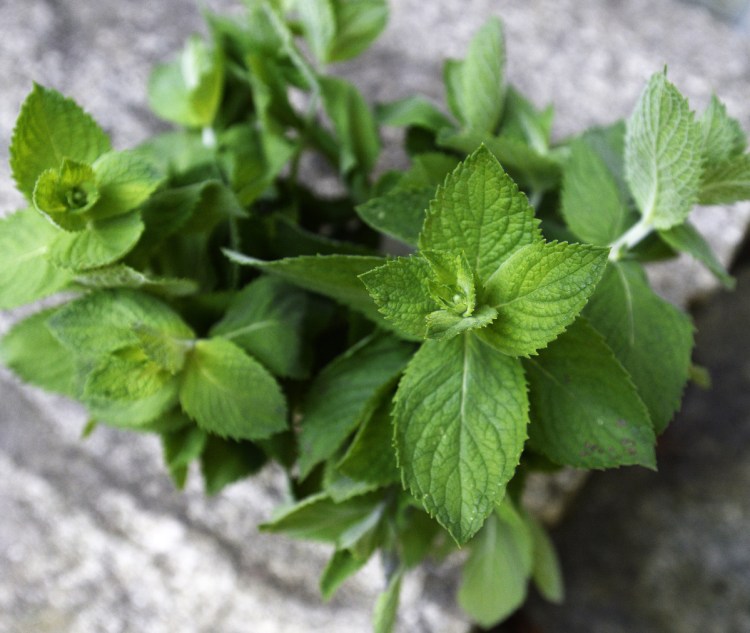Mint has a fabled reputation as both a blessing and curse. Ancient Greeks rubbed their banquet tables with mint leaves, leaving the essential oils to provide a hospitable scent for their guests. But in Greek mythology, the origin the dozens of species of mint available today stems from Persephone’s revenge on a nymph named Minthe. The naiad tried to seduce Hades, the goddess’s husband. To prevent future temptation, Persephone relegated Minthe to a life in garden beds as the plant we now use to tame bad breath, scent spring lamb and join bourbon in juleps.
But mint in the garden can be as aggressive as a randy water sprite, warns our resident gardening columnist Tom Atwell. “Mint spreads quickly if a gardener doesn’t pay attention to keep it under control. It spreads from its roots underground and… roots itself where above-ground shoots touch the soil. If planted, people should rip part of it out by its roots whenever some mint is needed instead of just cutting some,” said Atwell. There is no mint in Atwell’s garden, partly because of its aggressive tendencies but also because his gardening partner and wife, Nancy, doesn’t like it.
Whether you follow Atwell’s advice and pick your mint by its roots or you, like me, pay two bucks a bundle because you like to chiffonade a few leaves to mix in with your morning berries, you’ve still got to deal with the stems. I leafed through 50 of the most often referenced cookbooks in my collection and every last one shunned the stems, calling for the foliage alone. But the fact of the matter is, the stems have just as much minty flavor as the leaves do. You just need to know how to use them.
The stems closest to the leaves at the tippy top of the shoots are very tender and can be chopped finely and used raw anywhere you’d use chopped mint leaves. If you’re making pesto or any other recipe that calls for the mint to be pulverized, the stems within two inches of the lowest leaf can be thrown right into the food processor and the fibers will be broken down easily. From that point on the stem down to its roots, the structure is fibrous and has a slightly bitter flavor, so those are best used to flavor syrups and sauces that have a minty note, like the Persian beverage Sekenjabin, colonial shrubs, or homemade mint chocolate-chip ice cream; they will get strained before using. One advantage mint stems have over the leaves is that they freeze very well. Midwinter you can pull them out of the freezer and throw them into pots of white beans or whole grains or add them when you steam fish.
If you’re going for aesthetics, by all means stick with the leaves. But if you’re simply looking for bold, minty flavor, incorporate the stems into your waste-free cooking routine with abandon.
ABOUT THE WRITER
CHRISTINE BURNS RUDALEVIGE is a food writer, recipe developer and tester, and cooking teacher in Brunswick, and the author of “Green Plate Special,” a cookbook from Islandport based on these columns. She can be contacted at cburns1227@gmail.com.
Send questions/comments to the editors.


